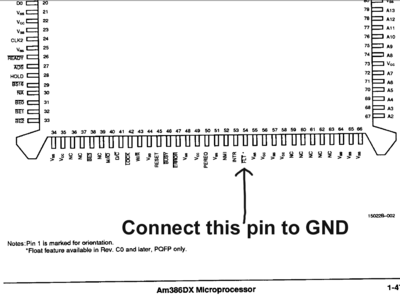keropi wrote:belated thanks for the tip feiopa, I hope the cpu on my Unichip 367C will be suitable 😀
any idea where #FLT is normally tied to? I assume VCC?
That is a good question. If it is tied to directly Vcc then wiring it to GND will cause a short. In my recomendation to wire FLT# to GND, I am under the assumption that FLT# was left floating. You best ensure that FLT# is not connected to Vcc by using the continuity test function or resistance function on your multi-meter. I don't recall if my FLT# pin was connected to anything or not.
Edit: looking at the photos, it appears that FLT# on my board was indeed connected to Vcc. Not sure why they did that. Check yours.
Plan your life wisely, you'll be dead before you know it.
